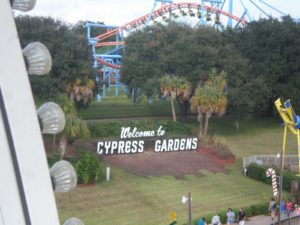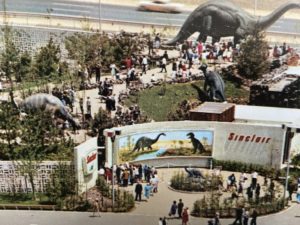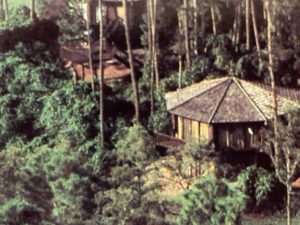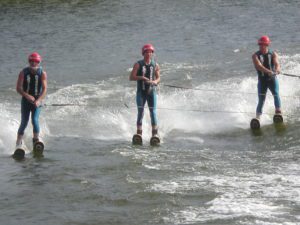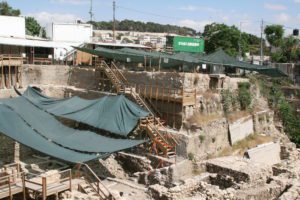End of a uniquely American attraction arrives just ahead of the nation’s 250th birthday.
Just in time for America’s 250th birthday in 2026, Walt Disney World will shutter its Tom Sawyer Island and Liberty Square Riverboat on July 6, 2025. In their place: a Cars-themed attraction. The river, island, and boat—all once essential parts of Disney’s historic storytelling—will be erased.
Ordinarily, the closure of a theme park ride might not warrant national attention. But this one does. Tom Sawyer Island was the only Disney attraction inspired by a great American novel. It’s also among the few areas in the park rooted in the soil of American culture—literally. When Disney engineers created the Rivers of America, they tapped the Floridian Aquifer for fresh, mosquito-free water. The new attraction requires a 2025 South Florida Water Management District permit—fitting symbolism for a change this sweeping.
The island opened in 1971, and most visitors—child or adult—have ventured across its barrel bridges or explored its caves. You couldn’t meet Mark Twain in real life, but at least on Tom Sawyer Island, you could play as if you had.
There was Potter’s windmill, Tom’s Landing (with a real chessboard), and the famous superstition bridge. There were kids letting off steam—literally. It was, if nothing else, a place to run.
The Liberty Belle Riverboat, meanwhile, was the great equalizer—an attraction both parents and kids could enjoy. The journey began at a Georgian-style dock, echoing early American design. The boat itself runs on actual steam, guided along a hidden track. Repairs required towing it across the Seven Seas Lagoon.
It didn’t trace the real Mississippi but instead followed Disney’s Rivers of America. You passed through a stylized “Indian Country,” though political correctness has since softened its storylines. A once-fiery cabin no longer burns. Soon to vanish are Harper’s Mill, the Alligator Swamp fishing shack, and the old American village.
The late architect Charles Moore, a postmodernist and critic of kitsch, admired Tom Sawyer Island. He called Disneyland a “personal monument” to Walt’s boyhood in Missouri. He wrote of the island’s “secret and private pleasures for a child” and praised the steamboat’s “finely crafted elegance.” Even Moore, known for scorning the fake, could admire how well Disney faked it.
The fun here was delightfully low-tech. A Florida tourism photo from August 1979 shows families crossing the barrel bridge—no screens, no apps. Just kids playing.
Moore once wrote that “adults almost always find everything too small and boring,” preferring Disney’s more orchestrated amusements. And maybe that’s why Tom Sawyer Island, in Florida, never got its due. At Disneyland, it was once a top-tier D-ticket ride. In Florida, it was ticketless—just walk in. And now, fewer do. The last Huck Finn movie came out in 1993, and visitors take their cues from Hollywood. No movie, no memory.
Ironically, 2025 is also the year the novel James, a reimagining of Huckleberry Finn, won the Pulitzer Prize for Fiction—proof that American realism still resonates.
Tom Sawyer Island let kids run free, paint fences, and lose themselves in play. It may have been the last hint of that old idea—free-range parenting. Yes, it’s risky to let children roam, but the rewards were real.
Now comes a Cars-themed experience, framed by National Park Service-style architecture. Outdoor adventure will be guided, curated, adult-friendly. Anything with boyish spirit must go. The park, like its guests, has grown up to please adults—perhaps too much.
The closure echoes the loss of other iconic Disney attractions, including 20,000 Leagues Under the Sea, once rooted in Jules Verne’s imagination. That, too, was Florida’s loss. Verne, after all, predicted rocket launches from this very latitude—though he placed it in Tampa.
In the days ahead, TikTok creators will record their farewells. The riverboat’s captain will call out one last time:
“Engine room ahead one quarter. Sound blast bell… Steady as she goes. I love this river even more than anything else.”
Above all, the riverboat offered something increasingly rare: rest. Like the Swiss Family Treehouse, it was slow, calm, and low-pressure. A counterweight to the high-adrenaline frenzy of the rest of the park. How long will those quiet corners survive?
As one critic on Reddit noted this week:
“The water is only an impediment to more glorious acres of cement.”



